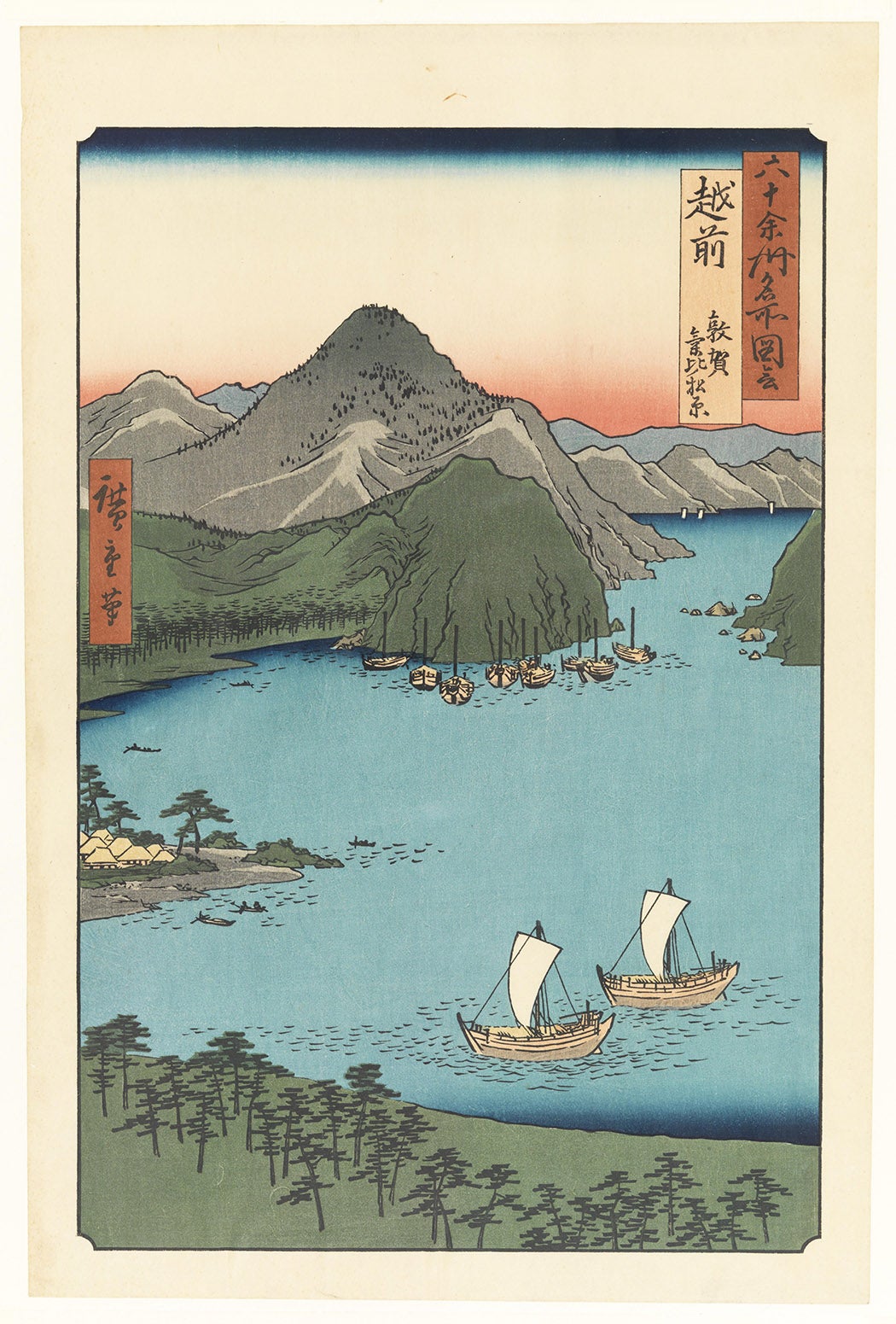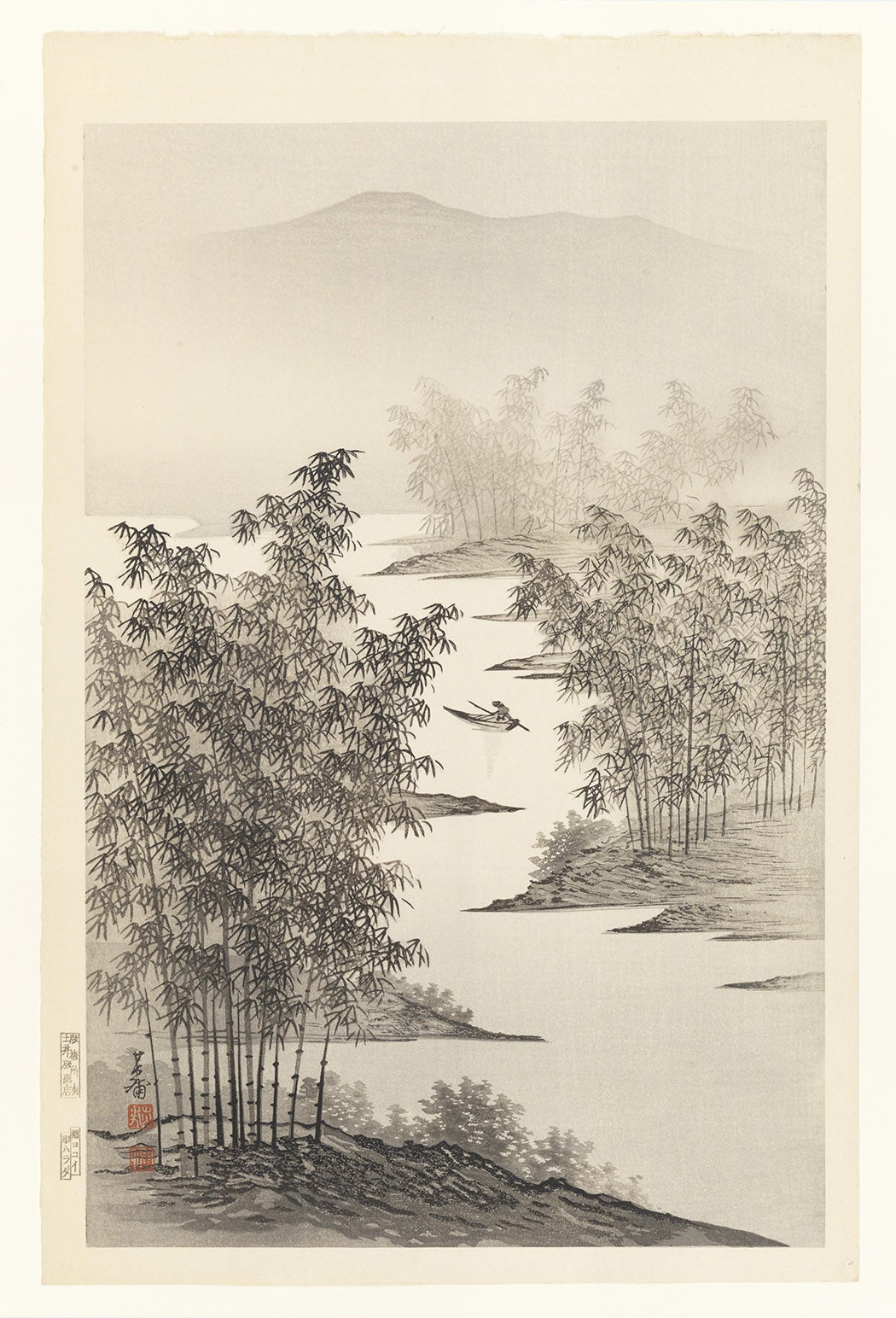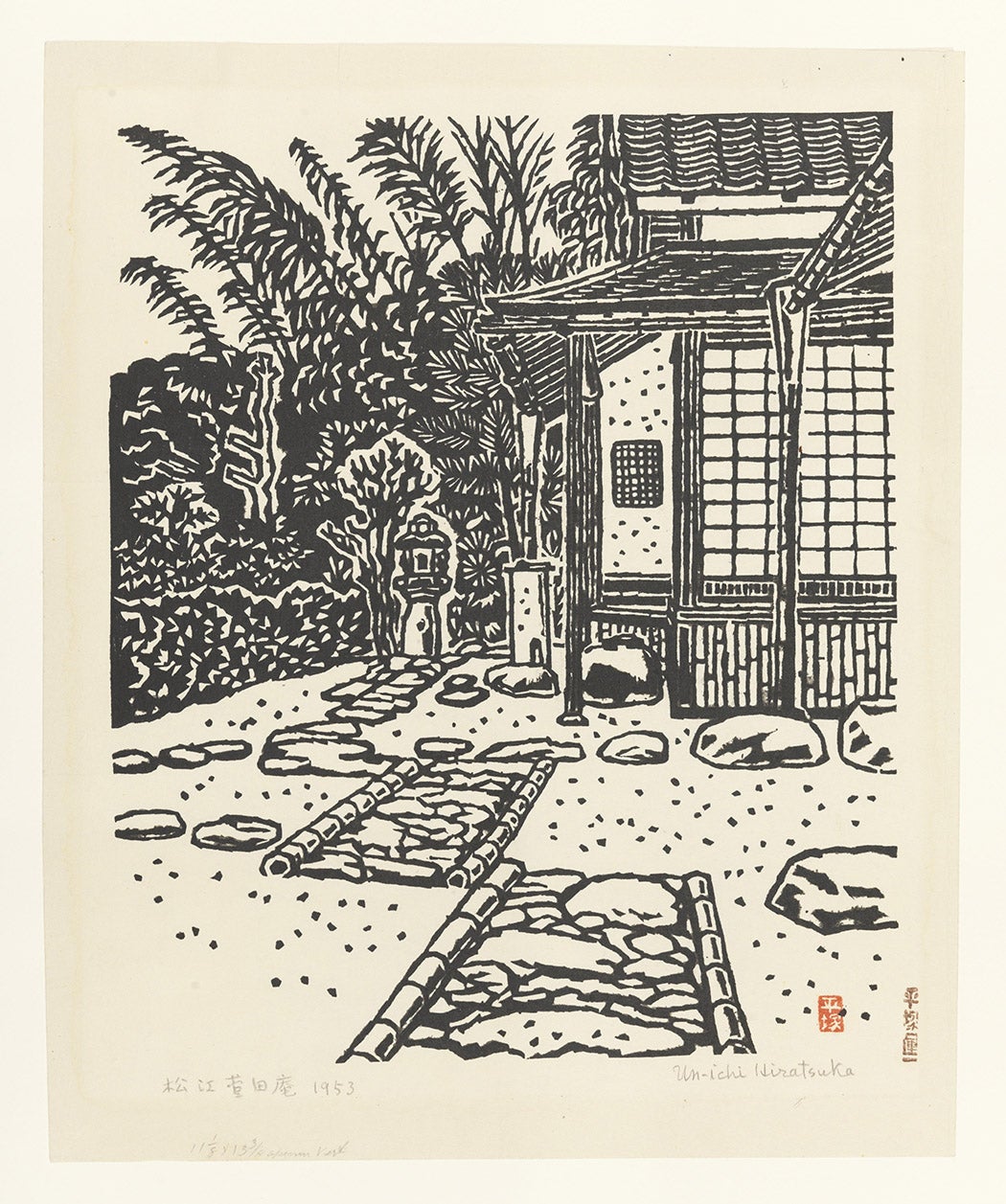A major exhibition on the art and influence of Japanese printmaker Katsushika Hokusai recently opened at the Museum of Fine Arts, Boston. Hokusai’s Great Wave is possibly the most recognized woodblock print on Earth, but as a digital collection from nearby Boston College demonstrates, many of Hokusai’s predecessors and contemporaries were skilled in the design and production of woodblock prints, or ukiyo-e, as well.
Ukiyo-e translates literally as “picture(s) of the floating world.” Ukiyo, the “floating world,” was originally “a Buddhist concept of the transitory, insubstantial nature of human existence,” explains art historian Donald Jenkins. But by the Tokugawa (Edo) period (1615–1868), the phrase evoked “the pleasures of human life, especially those associated with the brothel districts and the amusement quarters, even while some remnants of its earlier connotations remained.”
Though artists also captured the world of such pleasures in painting, today, the term ukiyo-e is often used as shorthand for Tokugawa era relief prints made from carved wooden blocks with a limited but often bold color palette. Though attributed to a single artist, the prints depended on a cooperative studio—an established artist created a design and handed off the labor to students who carved the blocks, applied the inks, and made the impressions.
The urban populations of Kyoto, Osaka, and Edo grew rapidly in the seventeenth century, and with that growth came what Jenkins describes as “the pursuit of pleasure” by townspeople with money to spend.
“No where was that quest for pleasure more in evidence,” he notes, “than in the ‘floating world’ of the amusement quarters that became such distinctive features of Japanese cities at this time.”
The print culture of the seventeenth century reflects the fascination those city amusements—restaurants and teahouses (katei), courtesans, kabuki, and sumo wrestling—held for artists and consumers of the era.
“Japanese print production in the seventeenth and eighteenth centuries centered on images of actors and prostitutes—the celebrities of their day, those who were considered ‘hot,’” notes art historian Julia Meech.
By the nineteenth century, travel had turned into “a national pastime” for Japan, writes Meech, and artists supplemented portraits of actors and courtesans with views of landscapes and famous sights/sites. Many of the prints attributed to Utagawa Hiroshige (born Andō Tokutarō), a contemporary of Hokusai (though Hiroshige was quite a bit younger) highlight this trend—his best-known work embraced both the urban floating world and the more remote countryside.

Hiroshige’s prints became popular with artists and collectors in North America in the 1850s and 1860s, around the time of his death.
“Isolated examples of American Japonisme first appeared around the middle of the nineteenth century in Boston, where the China trade quite naturally provided a link to Japan,” writes Meech. She points to John La Farge—known best in the Boston area for his design of the stained-glass windows of Henry Hobson Richardson’s Trinity Church—as an entry point for Japanese design into American art. La Farge encountered Japanese prints while studying in Paris in the 1850s, and he soon began “incorporating elements from Hiroshige and Hokusai into his own compositions.”
Exemplary of Hiroshige’s travel art is the well-known Fifty-three Stages of the Tōkaidō Road (c. 1833), a set of prints showcasing the fifty-three post stations along the road between Kyoto and Edo. His depiction of the fifth station, Totsuka, which foregrounds a traveler arriving at a teahouse at Motomachi Fork, is typical of the series.

Hiroshige himself traveled from Edo to Kyoto in 1832, sketching the sights as he went, so many of the scenes in Fifty-three Stages are based on his own observations. For other travel series, such as his Famous Views of the Sixty-Odd Provinces, he looked to early nineteenth-century guidebooks. The subsequent designs, including his interpretation of the Kehi pine tree grove in Tsuruga, Echizen Province, are organized according to the highway that runs through each province.
In addition to classic ukiyo-e and landscapes of Hiroshige, Hokusai, and contemporaries, the online collection includes several examples of twentieth-century woodblock prints, representing both the folk art (mingei) and “creative prints” (sosaku hanga) traditions.

The bamboo trees and misted landscapes in the work of Imoto Tekiho are appropriately ethereal and mysterious. Little is known about Imoto, other than his birth year (1909) and that he studied in Kyoto under Inshō Dōmoto, a landscape artist who explored Chinese traditions in addition to Japanese and Western abstract art.

One of the more unusual prints comes from modern printmaker Un’ichi Hiratsuka. According to the late Margaret O. Gentles, Curator of the Buckingham Collection of Japanese Prints at the Art Institute of Chicago, Hiratsuka was the first modern Japanese print artist to make a living from the sale of his prints. A leader in the creative prints movement, which emphasized the work of an individual artist rather than the collaborative approach taken in the Tokugawa studios, Hiratsuka taught printmaking in both Japan and the United States. His mentorship of printmaker Munakata Shikō is well documented; lesser known, perhaps, is his influence on the Cape Dorset printmaking culture.
Weekly Newsletter
Hiratsuka used colored ink in many of his early prints, but in the postwar era, his blocky compositions were made with only black ink. As Gentles explained,
Hiratsuka ha[d] always been fascinated by the coloring of black ink on white paper and was greatly influenced by the painting of Sesshu and the prints by Moronobu. Once he found a stack of early Buddhist prints and from that moment he has striven to combine in his own work their naivete with the strength of Moronobu’s line.
Hiratsuka’s view of a shrine garden, completed in 1953, highlights his bold carving style—he often rocked a square-end chisel to create rough, deep lines—and stark, monochromatic palette.
To explore these prints and more, visit Boston College’s Japanese Prints Collection.







